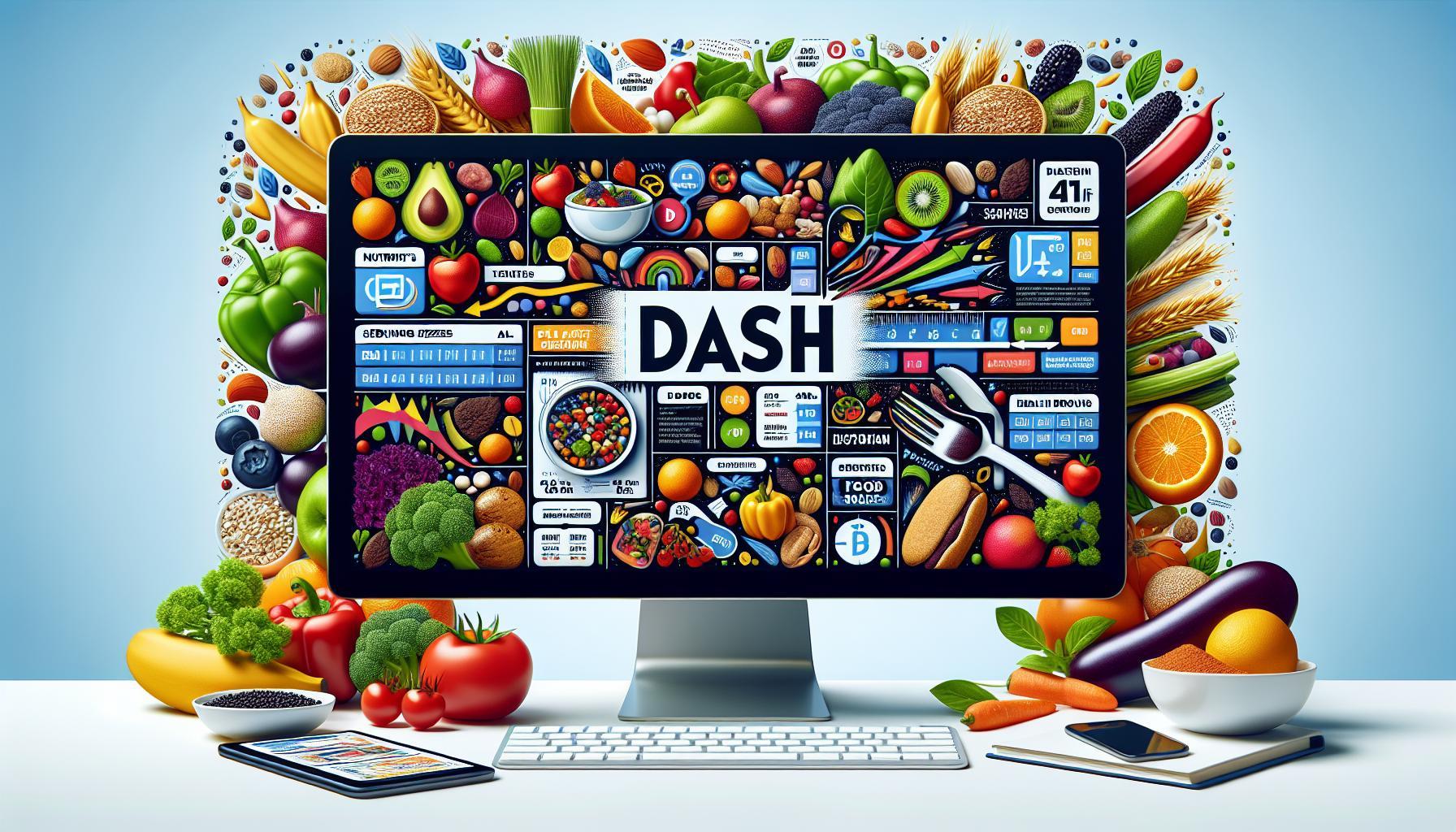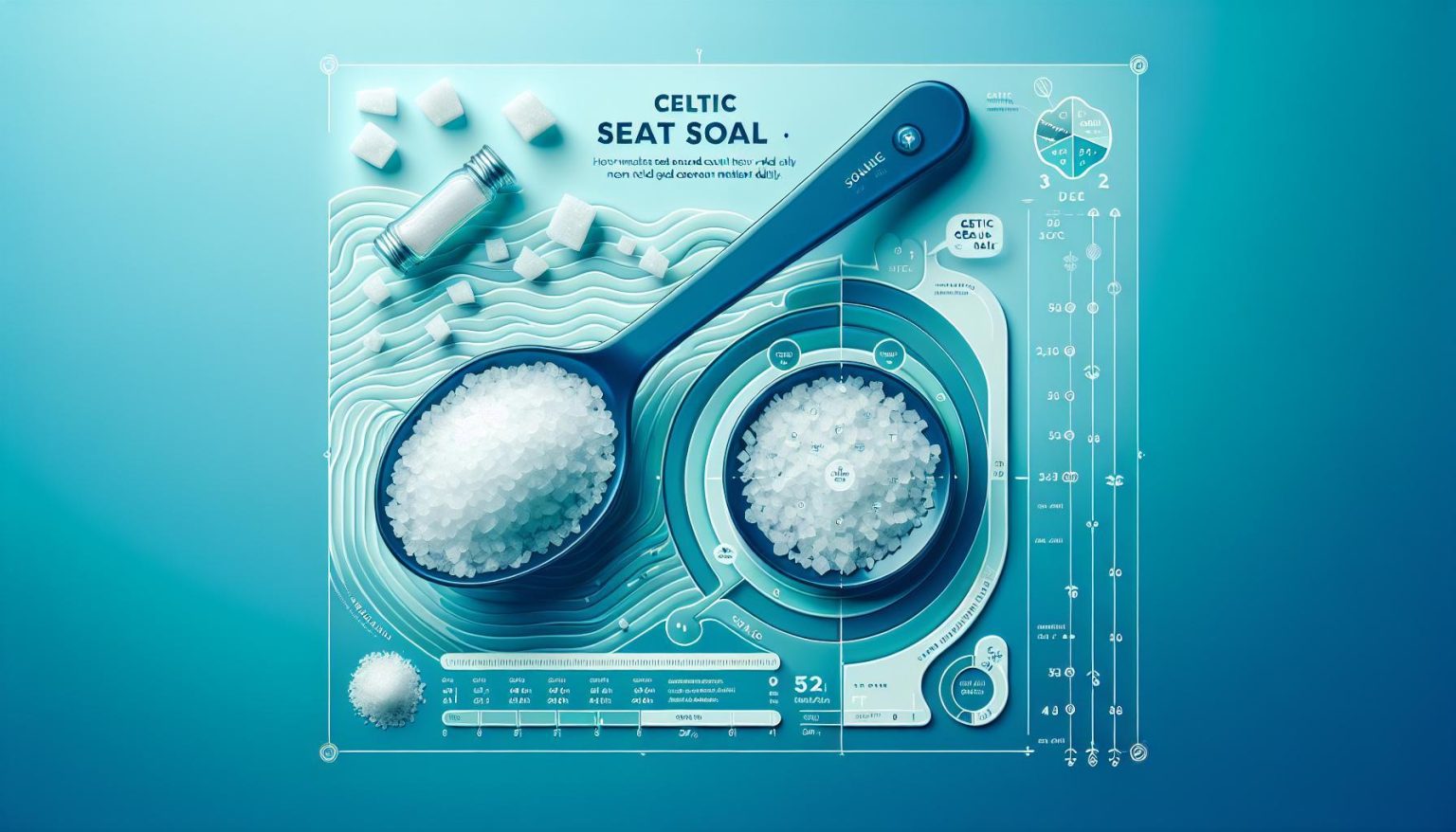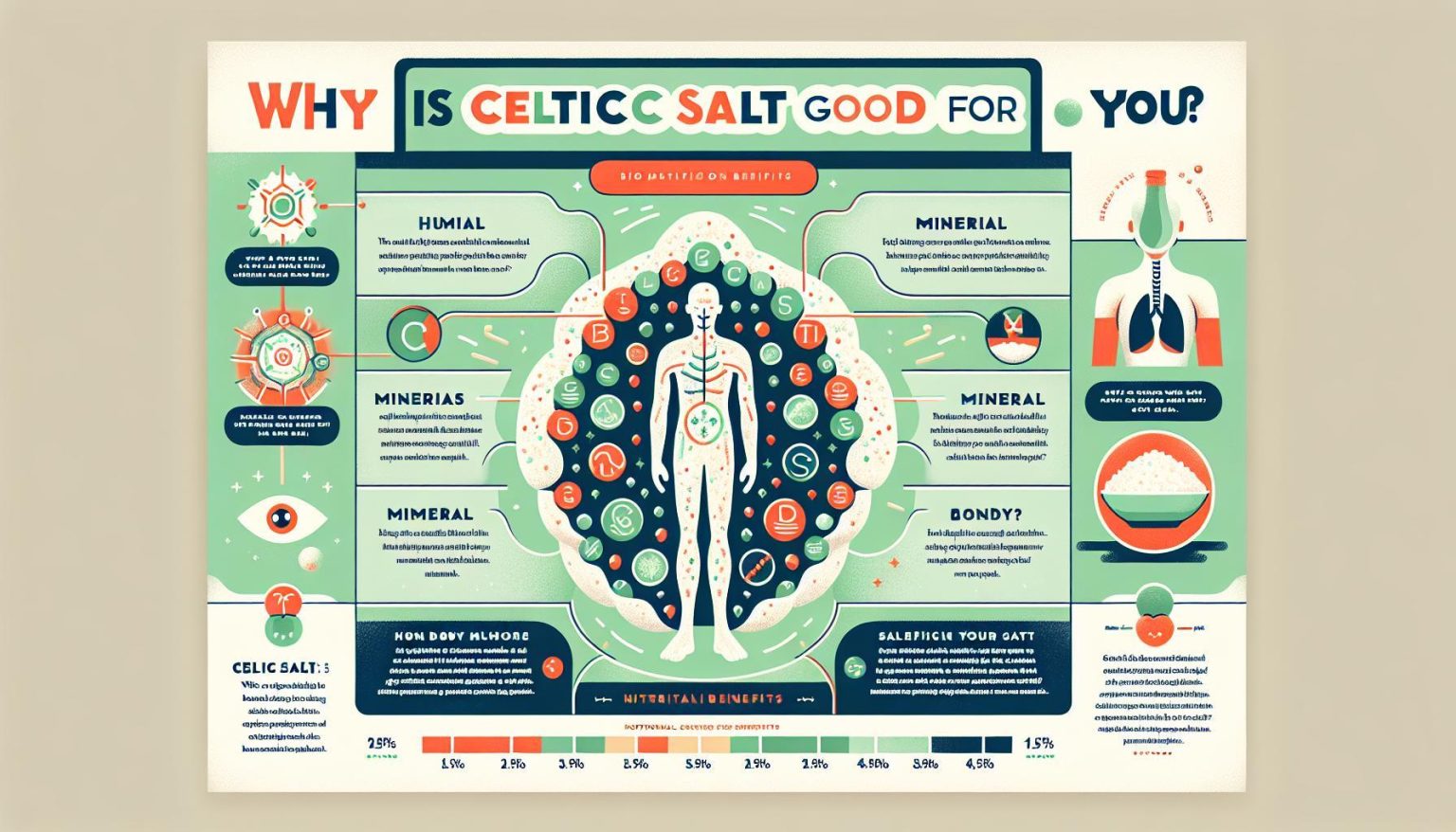When it comes to high blood pressure, many are stuck pondering what can be done beyond medication. Among the many Dietary Approaches to Hypertension Management, one solution stands out prominently – the DASH Diet. Providing the medium to lower high blood pressure without the use of prescriptions, DASH or Dietary Approaches to Stop Hypertension, enables individuals to regain control over their health.
Introduction to the DASH Diet
In an effort to understand the “The DASH Diet Explained,” it is crucial to delve into its fundamentals. At its core, this dietary approach stresses on a balanced intake of vegetables, fruits, and whole grains. At the same time, it promotes the reduction of foods high in saturated fats and cholesterol, such as red meat and full-fat dairy products.
Origin And Purpose of The DASH Diet
The DASH diet was created in the mid-90s by the National Heart, Lung, and Blood Institute (NHLBI) with a simple yet noble purpose: combating high blood pressure. Its major aim is Reducing Sodium in Your Diet while encouraging the consumption of foods rich in key minerals like potassium, calcium, and magnesium. These minerals are critical to lowering blood pressure.
Explanation of the Dietary Guidelines and Principles
The guidelines of the DASH diet are straightforward. They involve increasing the intake of fruits and vegetables, opting for whole grains over refined ones, and prioritizing lean protein sources. Essential nutrients from these foods lay the foundation for healthier arteries and, in turn, lower blood pressure. Moreover, the diet also recommends a specific dose of nuts, seeds, and legumes a few times a week, accommodating both vegetarians and omnivores alike.
How the DASH Diet Promotes Overall Health and Well-being
Beyond addressing hypertension, the principles of the DASH diet spill into a wholesome approach towards nutrition, thereby enhancing overall health and well-being. Particularly, the diet’s promotion of Potassium-Rich Foods to Combat High Blood Pressure simultaneously supports heart health and kidney functioning. The emphasis on lean meats and whole grains also aids in maintaining a healthy weight and curbing the risk of diabetes. Moreover, by limiting saturated and trans fats, the diet directly helps in improving cholesterol levels.
Understanding the DASH diet is the first step in the journey towards better health and blood pressure control. With the clarity that “the DASH diet explained” brings, transitioning to this diet may seem a little less daunting. Remaining committed to these healthy eating patterns can open opportunities for an enhanced, health-conscious lifestyle.
In the next section, we will delve deeper into the science behind the DASH diet and how it can positively affect your health.
The Science Behind the DASH Diet: How It Affects Your Health
When it comes to the role of diet in promoting good health, the importance of the Dietary Approaches to Stop Hypertension (DASH) diet can’t be overlooked. It is recognized globally for its potential in reducing the risk of heart diseases, managing blood pressure, and enhancing general wellness. Let us delve into the science behind the DASH diet and its various health benefits.
Research and Studies Supporting the DASH Diet
Many scientific studies underscore the benefits of the DASH diet. For instance, research published in the Archives of Internal Medicine showed a strong correlation between adherence to the DASH dietary pattern and a significant reduction in hypertension and heart failure. Similarly, a study from the New England Journal of Medicine affirmed that following the DASH diet helps in lower systolic and diastolic blood pressure, proving to be as effective as taking antihypertensive medication.
The Impact of the DASH Diet on Blood Pressure
One of the novel features of the DASH diet is its power to control blood pressure. According to the American Heart Association, this diet encourages the intake of foods rich in potassium, calcium, and magnesium—minerals vital in lowering blood pressure. By recommending plentiful servings of fruits, vegetables, and low-fat dairy products, while limiting the intake of sodium, the diet enables blood pressure regulation, making it an excellent dietary approach to prevent and control hypertension.
Effects of the DASH Diet on Cardiovascular Health
The DASH diet isn’t merely a blood pressure reducing plan—it’s a heart-healthy diet that reduces the risk of cardiovascular diseases. According to the National Institutes of Health (NIH), the diet lowers levels of LDL (bad) cholesterol, a major contributor to heart disease. It advocates for the consumption of lean meats, whole grains, and fish, all of which are high in heart-friendly omega-3 fatty acids and fiber.
Other Health Benefits of the DASH Diet
Beyond blood pressure and cardiovascular health, the DASH diet also boasts other potential benefits such as weight loss, diabetes management, and kidney health. A study published in the American Journal of Clinical Nutrition showed that people following the DASH diet lost more weight over a 24-week period compared to other diets. By emphasizing portion control and balanced nutrition, it helps improve glycemic control, making it beneficial for diabetics. Additionally, because the DASH diet limits sodium intake, it helps protect kidney health.
With the above-mentioned scientific justifications and health benefits, it’s evident why the DASH diet is a favored choice for many looking to improve their overall health. But, how does one transition to this diet? In the next section, we take you through a beginner’s guide to starting the DASH diet, with helpful tips and tricks to ease your journey.
A Beginner’s Guide to Starting the DASH Diet: Tips and Tricks
Transitioning to the Dietary Approaches to Stop Hypertension (DASH) Diet can be a rewarding journey towards better health. This practical guide offers tips and techniques that can help you incorporate the DASH Diet into your daily routine, while overcoming common challenges and obstacles.
Steps for Transitioning to the DASH Diet
1. Education and Awareness: Understand the DASH Diet principles. Equip yourself with the knowledge of its benefits in reducing hypertension and promoting cardiovascular health. Healthy fats, lean proteins, whole grains, vegetables, and fruits form the foundation of this diet.
2. Gradual Changes: A sudden lifestyle change can be challenging. Begin by reducing the intake of processed foods, saturated fats, and sugars. Gradually increase the proportion of DASH Diet-friendly foods in your meals.
3. Consult a Professional: A dietitian or healthcare provider can help you construct a nutrition plan that suits your preferences and nutritional needs while aligning with the DASH framework.
Tips for Grocery Shopping and Meal Planning
Smart Shopping: Stock up on fresh produce, lean proteins, low-fat dairy, and whole-grains. Limit purchases of processed foods which often contain high sodium and unhealthy fats. Check nutrition labels to ensure you are making DASH Diet compliant choices.
Meal Planning: Plan your meals and snacks for the week, ensuring a balance of nutrients in line with DASH principles. Keeping a meal plan can make grocery shopping more focused, and prevent last-minute unhealthy choices.
How to Incorporate the DASH Diet into Everyday Life
From family dinners to meals on the go, the DASH Diet can be a seamless part of your daily life. Replacing unhealthy snacks with fruits, vegetables, and nuts is a simple step. Another method is reimagining favorite recipes to include more veggies or whole-grains, and less salt and fat. Regular exercise complements the DASH diet by aiding in weight management and cardiovascular health.
Overcoming Common Challenges and Obstacles
While obstacles like cravings, and the urge to revert to old habits may arise, focusing on the health benefits and long-term goals can keep you motivated. Also remember, it’s okay to have cheat days occasionally – the key lies not in perfection, but consistency.
Use a food diary to monitor your progress or join a support group for motivation and tips from others on their DASH journey. Always be patient, results may take time but they will be long lasting.
With these tips, you’re well-equipped to start your journey on the DASH Diet. In the next section, learn about DASH-approved meal plans and delicious recipes that won’t make you compromise taste for health.
DASH Diet Meal Plans and Recipes: Delicious and Nutritious Options
The DASH Diet is an excellent route to take for a balanced and satisfying diet. Ensuring nutrient-dense, whole-food focus, this diet allows you to enjoy an array of delicious food while still adhering to healthy living practices, and there’s no shortage of options when it comes to meal plans and recipes.
Sample Meal Plans for Beginners
Starting a new diet can be overwhelming, hence structured DASH meal plans come in handy. A typical day might include a breakfast of mixed berries and low-fat yoghurt with a sprinkling of flaxseeds, a lunch of grilled chicken salad, dinner featuring salmon with quinoa and broccoli, and healthy snacks such as a handful of nuts or sliced veggies throughout the day.
Recipes and Meal Ideas for Breakfast, Lunch, and Dinner
The beauty of the DASH diet centers on its flexibility; there is an abundance of recipe options available to cater to various palates and preferences. For breakfast, you might enjoy scrambled tofu with veggies, fresh fruit toast or porridge sprinkled with nuts and seeds. Lunch could be a hearty vegetable soup or brown rice sushi. A dinner recipe idea could include a teriyaki stir-fry with a variety of colorful vegetables.
Snack Options That Align with the DASH Diet Guidelines
Snacking can often be the culprit for dietary downfalls, but not with the DASH diet! You can savor healthy snacks such as carrot sticks with hummus, cherry tomatoes with mozzarella or whole grain crackers with low-fat cheese. Fruit and yogurt smoothies are also a delectable option, with the added benefit of being incredibly filling thanks to their high protein and fiber content.
Tips for Creating Balanced and Satisfying Meals
The key to creating fulfilling meals on the DASH diet is a prioritized focus on whole foods. Maximizing intake of fruits, vegetables, lean proteins, and whole grains ensures satiety and nutrient consumption. Trying new seasonings, spices and herbs can also aid in making meal times a thrilling experience versus a monotonous chore. Additionally, remember to monitor portions to prevent overeating – a balanced meal is just as much about quality as it is about quantity.
Embarking on the DASH diet, you’ll learn that you needn’t deprive yourself of foods you love. Instead, it articulates a perfect blend of tasty, nutritious, and satisfying meals!
Stay Tuned for Success stories: How the DASH Diet Has Changed Lives
The upcoming section will inspire you with real-life triumphs, providing insight into personal experiences, weight management, and the overall wellness impact of adopting the DASH diet.
Conclusion
The DASH Diet is a scientifically-backed dietary plan that offers numerous health benefits, particularly for individuals looking to lower their blood pressure and improve their overall heart health. With an emphasis on nutrient-dense foods and a balanced approach to eating, the DASH Diet is an excellent choice for those seeking to promote their overall wellness.
Frequently Asked Questions
1. What are the primary goals of the DASH Diet?
The primary goals of the DASH Diet are to lower blood pressure and promote overall heart health. It emphasizes consuming nutrient-dense foods and limiting sodium intake to achieve these goals.
2. Are there specific meal plans or recipes that align with the DASH Diet?
Yes, there are many meal plans and recipes available that align with the principles of the DASH Diet. These resources can help individuals incorporate the dietary guidelines into their everyday lives.
3. Can the DASH Diet help with weight management?
Yes, the DASH Diet can be beneficial for weight management, as it emphasizes consuming a variety of nutrient-dense foods and limits the intake of unhealthy fats and sodium.
4. What are some common challenges and obstacles associated with starting the DASH Diet?
Common challenges when starting the DASH Diet can include adjusting to a new way of eating, overcoming cravings for unhealthy foods, and navigating social situations that involve food.
5. What are some success stories from individuals who have tried the DASH Diet?
Many individuals have shared their success stories with the DASH Diet, citing improvements in blood pressure, cardiovascular health, and overall well-being. These stories serve as inspiration for those considering adopting the dietary plan.










